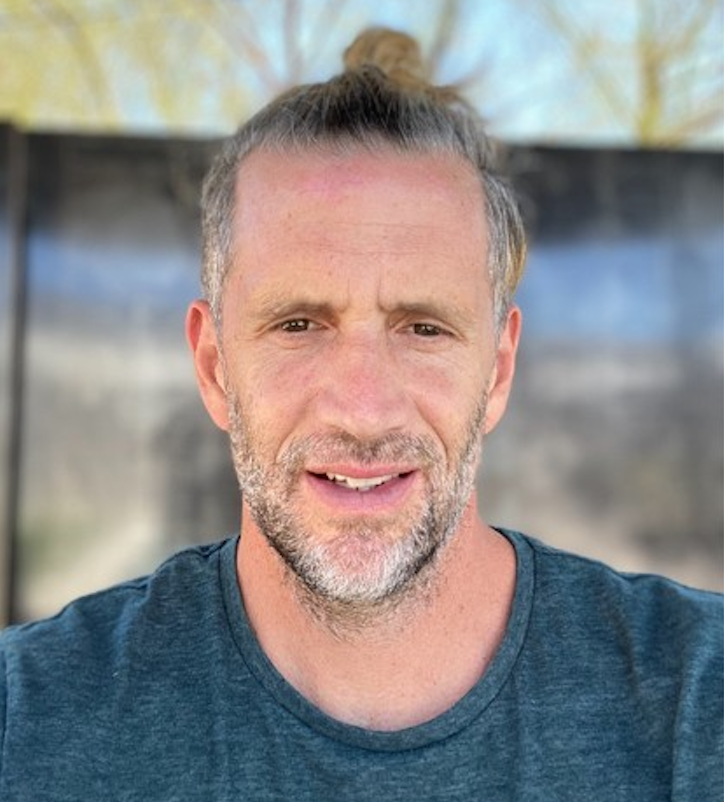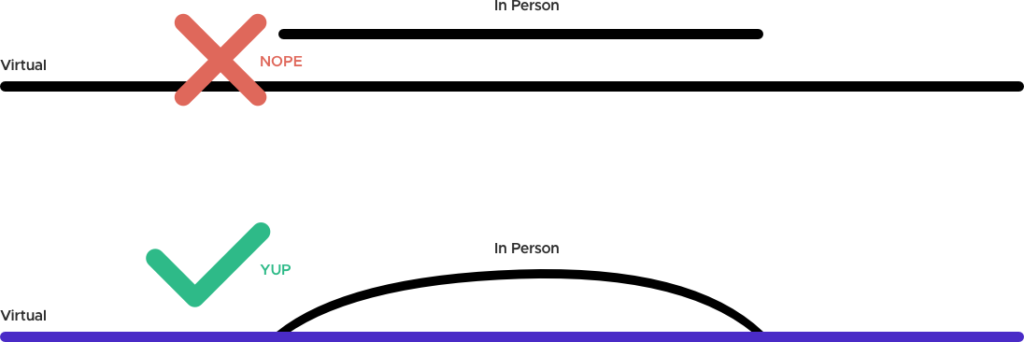
Lawrence is a serial entrepreneur who lives in the Mission District of San Francisco with his wife and daughter. He is the CEO and co-founder of twine (twine.nyc), a simple networking module for virtual, in-person, and hybrid events that he launched in 2020.
Previously, he founded DoubleDutch, the market leader for mobile event apps, which was acquired by Cvent in 2019.
When not working, you can find Lawrence riding bicycles with his family, on the basketball court, or reading Science Fiction.
Last month, I was a facilitator for some breakout rooms at Hubb’s excellent virtual event, Untethered. In these 90 minute breakout sessions, participants were grouped together to discuss some of the bigger issues facing the industry; topics like attendee safety in the post Covid age, exhibitor ROI, and the promise and challenge of hybrid events.
We used Zoom breakout rooms + Mural to ideate with virtual sticky notes. It was cool. As it turns out, working on a problem together is actually a really good way to network!
In one of these breakout sessions, I got matched with some big brains – Sina Bünte from #eventprofsbreakshit, Taylor McLoughlin, co-founder and head of product at twine, and Jessica Bauer.
Together, we went deep on the looming hybrid event question. How are planners supposed to run two independent events, one for virtual participants, and one for in person? Do planners need to think about crossing the streams? (yes, sometimes). What is the tech going to look like to power these experiences? (still an open question). And in a world when almost everyone is vaccinated, what are attendees going to want to do – jump on a plane or tap on a link? (at this point, we don’t know).
My sense is that we stumbled upon a key insight, and I wanted to quickly share it. Here it is:
Conventional wisdom says that hybrid events are two tracks – an in person track, and a virtual track (with a possible third dynamic of finding ways to connect your in person and virtual attendees).
This is not quite right; here’s why. If you consider an event as three distinct phases – pre-event, during event, and post-event – the picture changes (for more on this topic see Points, Lines, and Circles: the Evolution of Events).
We are no longer talking about two parallel tracks. We are talking about ONE attendee journey that forks briefly for the day(s) of the in person experience, before converging again into a single stream / community.
Here’s a pic:

If you believe that both event owners and event technology companies have aspirations to deliver longer lasting experiences, and that attendees have been conditioned during the pandemic to engage with events that last weeks not days, it becomes clear that the virtual experience is the unifying track. (You could even argue that In Person attendees will dip in and out of the virtual track even while on site, via the mobile event app), making the case for a single journey even stronger.
So there you have it… this subtle point has changed the way we think about the attendee journey over here at twine.
Does it unlock any new thinking for you?



Responses